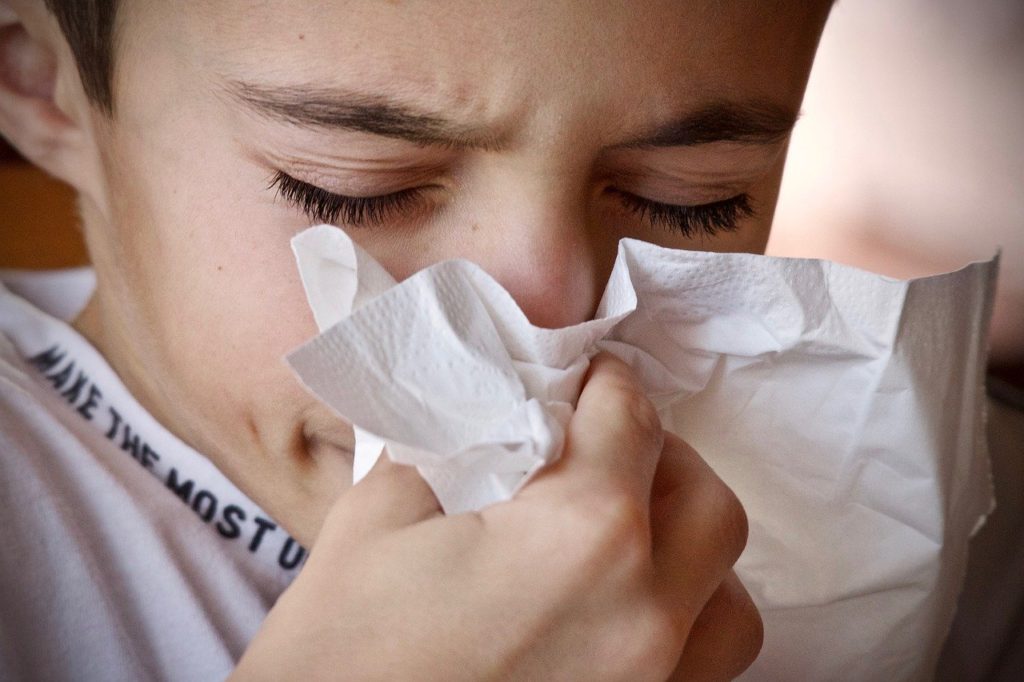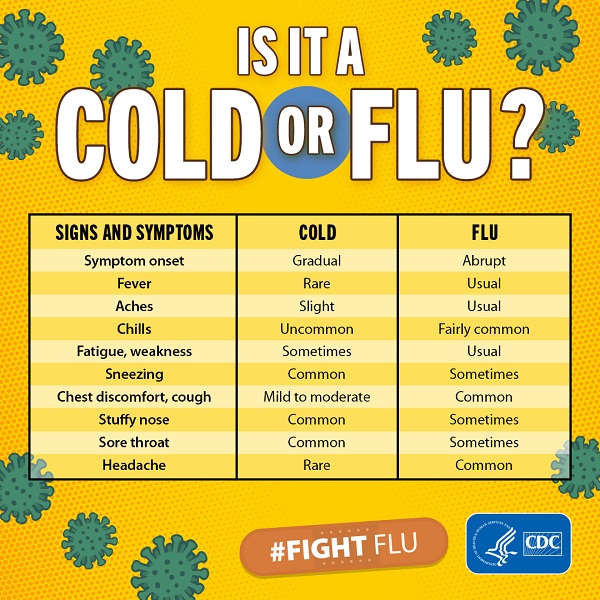
What are the differences between cold and flu virus?
No one wants to be sick. While you can get respiratory viruses throughout the year, this time of the year is tough because so many more people are indoors together. While both the common cold and the flu (Influenza) are respiratory illnesses they are cause by different viruses. Many of their symptoms are similar and it can be difficulty to tell the difference based on just your symptoms. While there is no test for the common cold, there is a special test for the flu.
Symptoms of a cold:
The common cold (there are more than 200 different viruses can cause a cold but the more common type is rhinovirus) can spread person to person through the air and close personal contact. Cold symptoms are usually milder than the flu and typically have no complications. Typically, the worse days of a cold are the 3rd, 4th, or 5th day and this is when some rush to the doctor for some help. Symptoms include:
- Sneezing
- Stuffy nose
- Runny nose
- Sore throat
- Coughing
- Increased Mucus (post-nasal drip)
- Water eyes
- Body aches
- Headache
- Rarely fever
When virus first set up shop in your nose, the nose starts producing clear mucus. This is the body’s way of trying to get rid of the virus. Sometimes after 2-3 days, the mucus may change to white, green, or yellow. This is NORMAL and does not mean you need an antibiotic. Seek medical care if your child is younger than 3 months and has a fever. See the chart below by the CDC that shows the differences between cold and flu symptoms . Also realize that with a typical cold sore throats can last up to 8 days, headache up to 10 days, congestion can last 14 days runny nose up to 14 days and a cough that can last 3-4 weeks,
Symptoms of the flu:
Hopefully you have already received a flu shot this year. It is not too late if you haven’t. Flu season in the United States is more prevalent in the fall and winter months, starting in October and sometimes as late as May. The World Health Organization collects information constantly and with input from Center for Disease Control in the United States, and 4 other national institutes in England, Australia, China, and Japan, come up with what flu viruses could be problematic for the upcoming flu season. Ultimately in the United States, the Food and Drug Administration makes the final decision on what strains will in the vaccine for that year. Children as young as 6 months can start receiving flu shots and there is no age limit. Young children, elderly, and any immunocompromised person are more susceptible to contracting the flu. Some common symptoms of the flu:
- Abrupt/sudden onset
- Fever
- Body aches
- Chills
- Headache
- Sometimes may have sore throat, runny nose, and cough but they are more likely to be symptoms of a cold.
If you have these symptoms and you visit a physician, a rapid influenza diagnostic test (RIDT) can be performed in office in about 10-15 minutes. These tests can sometimes give a false negative, meaning you might still have the flu. Other tests are available but typically they need a special lab to process that your doctor’s office won’t have. If caught in time, you may be given an anti-viral medication to help lessen the severity of the symptoms and the anti-viral may also be prescribed for other household members to protect them.
If it is a cold
There is no cure for a cold. It will run its course and you will get better without taking anything. Antibiotics WILL NOT help a cold. Antibiotics taken unnecessarily can cause other problems when used. It may have side effects (rash, nausea, diarrhea) and it may create antibiotic resistant infections.
If you have a cold, get plenty of rest, drink fluids, use humidifier/vaporizer if needed, saline nasal sprays, or treat some of the symptoms with over the counter medicines. Ask your pharmacist for advice on what options are available. Also remember to wash hands, avoid close contact with sick individuals, cover your mouth and nose when sneezing coughing, avoid any smoking, and avoid touching your eyes, nose, and mouth with unwashed hands.
If it is the flu. . .
Some of the available medications are Tamiflu, Rapivab, Relenza, and Xofluza. Be sure to decrease your exposure people if you are diagnosed with the flu. Stay home until you are better. If you are taking care of someone with flu avoid direct face to face situations and wash your hands often and immediately after working with the sick person. If you are holding a sick child, lay their head on your shoulder to avoid the child coughing in your face. Follow advice for treatment of colds as well such as getting plenty of rest and fluids.
Resource: Center for Disease Control (CDC) website (https://www.cdc.gov).

